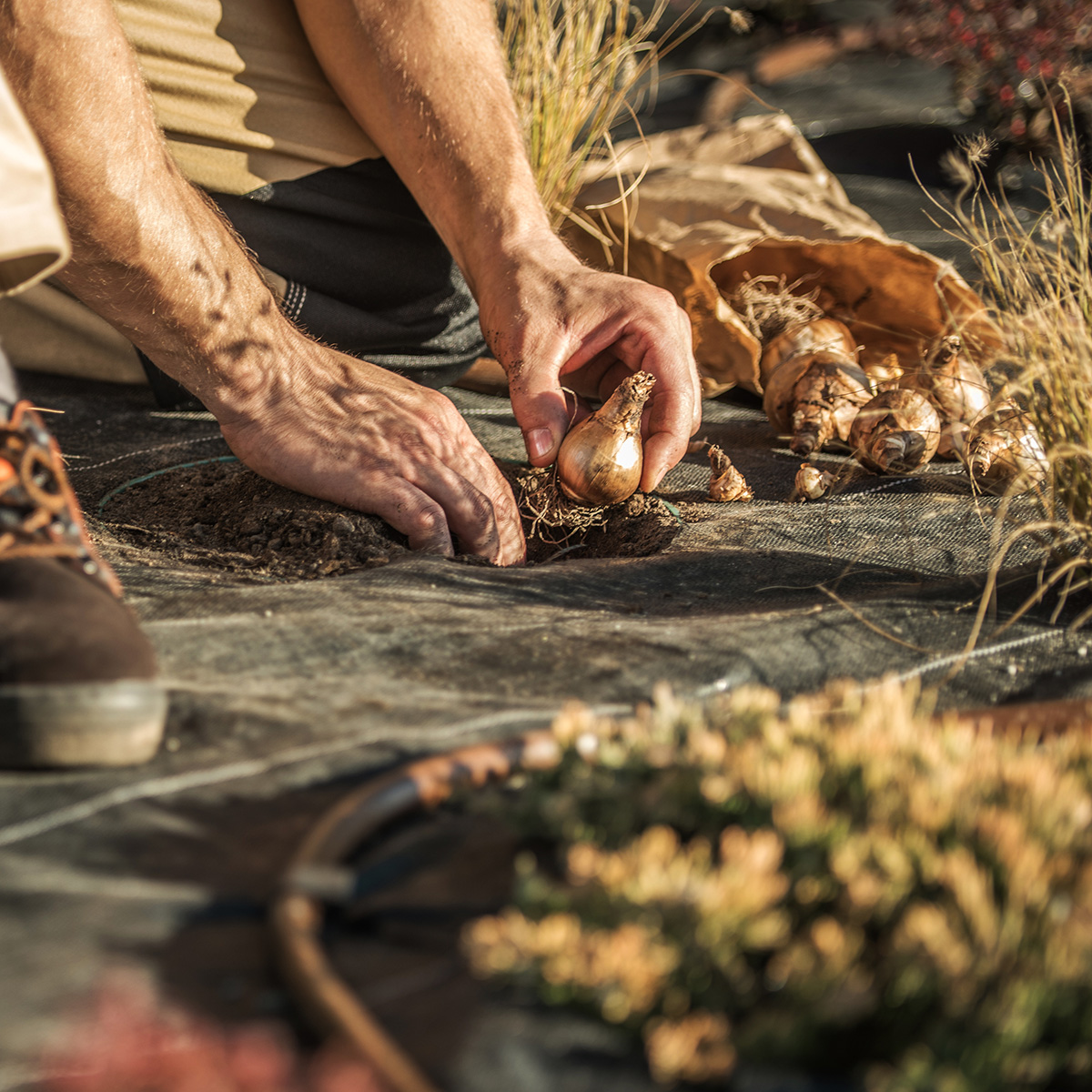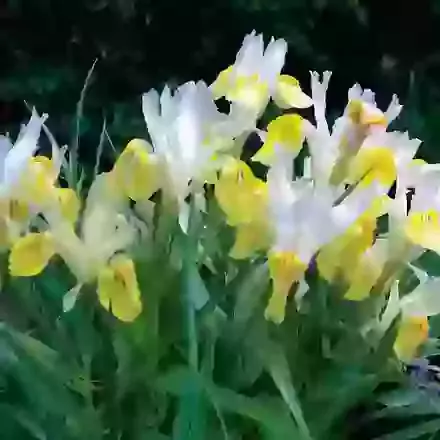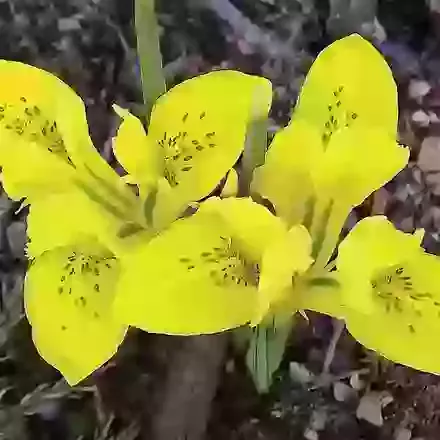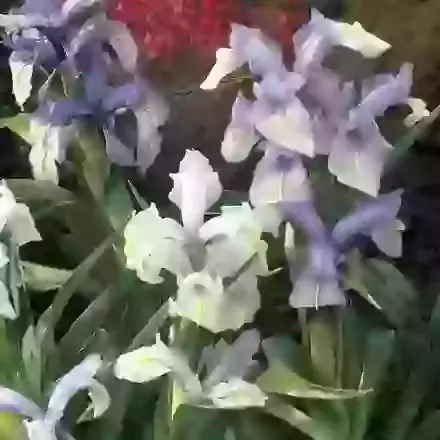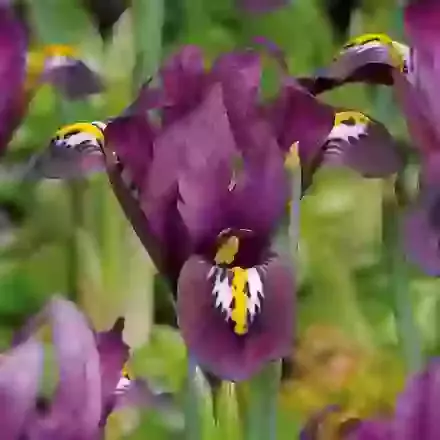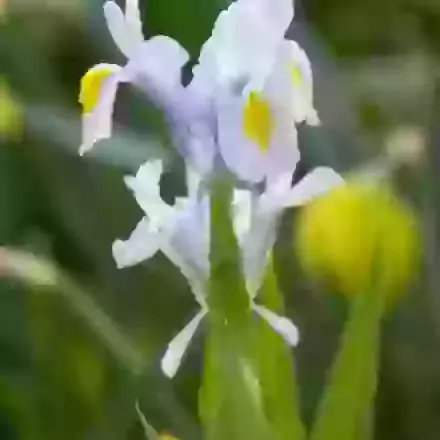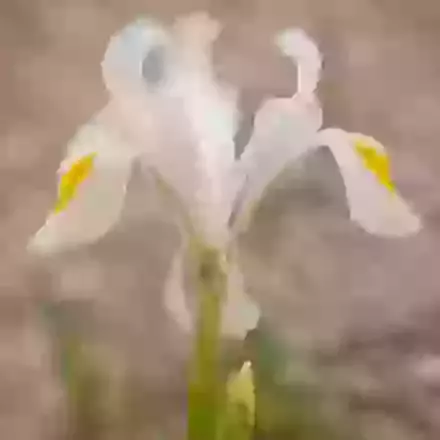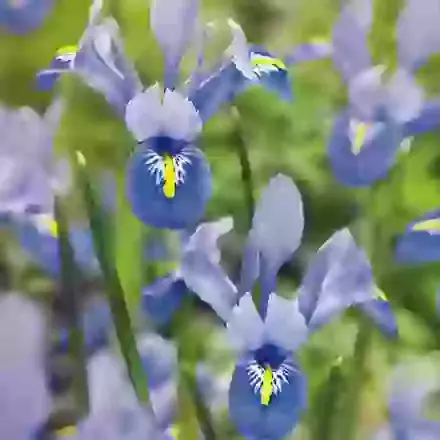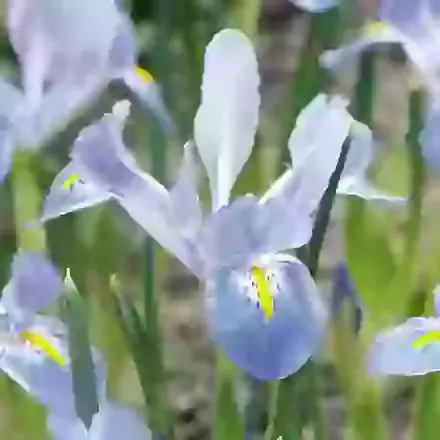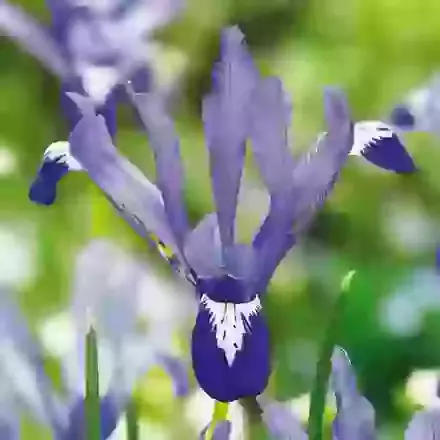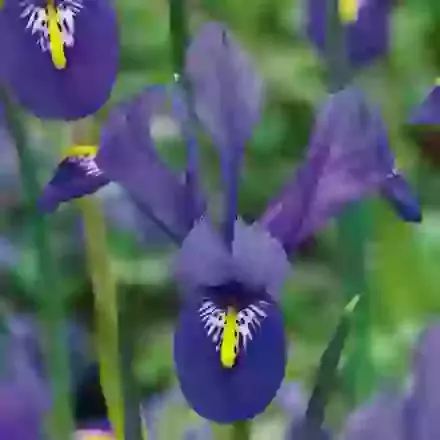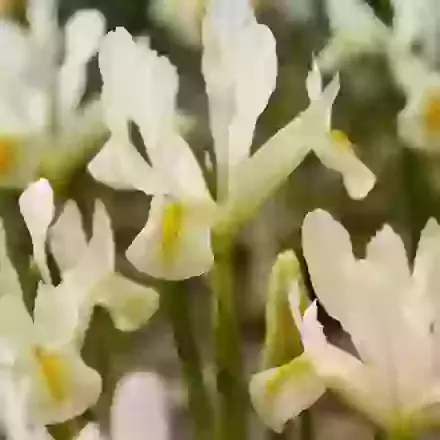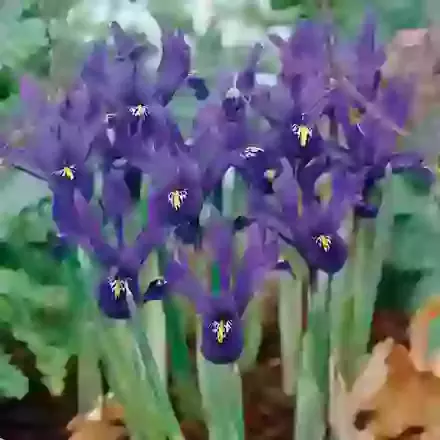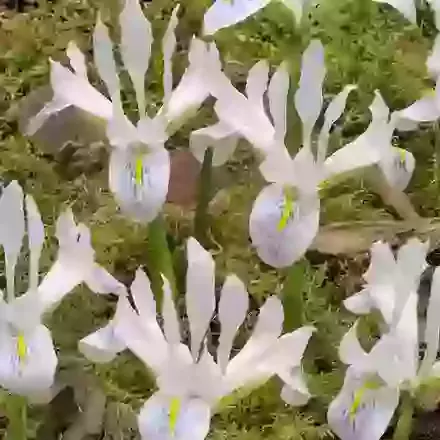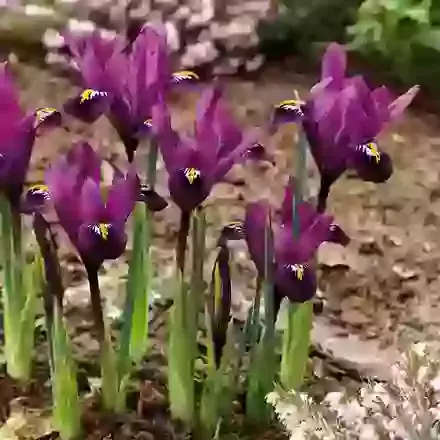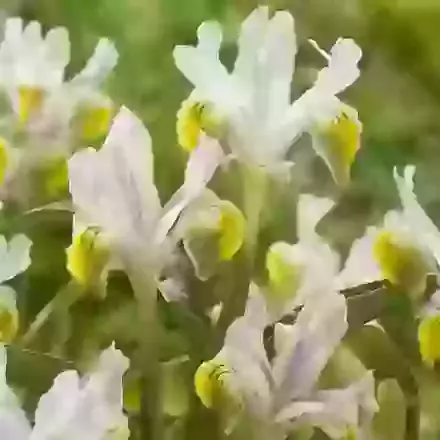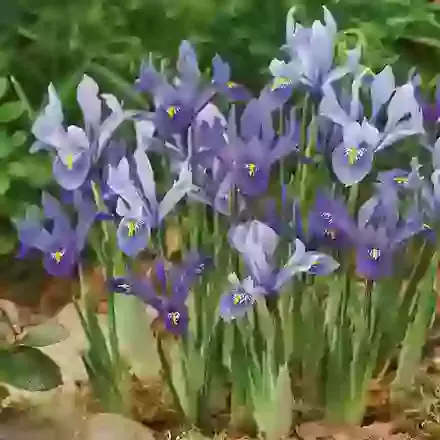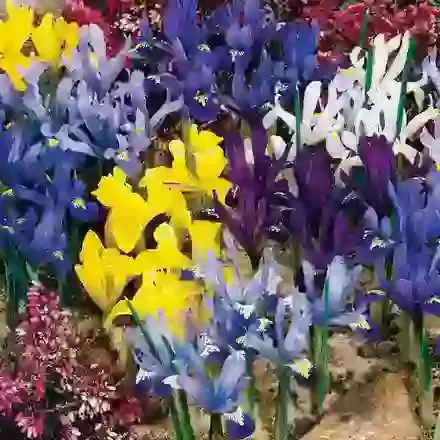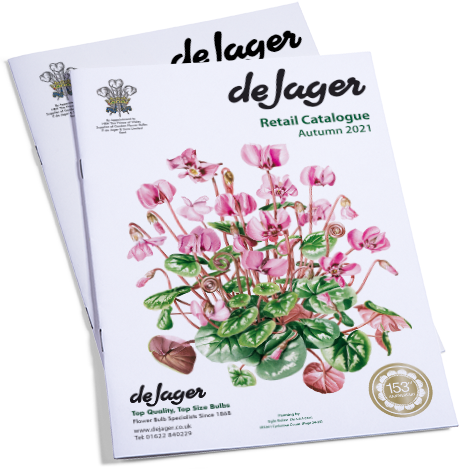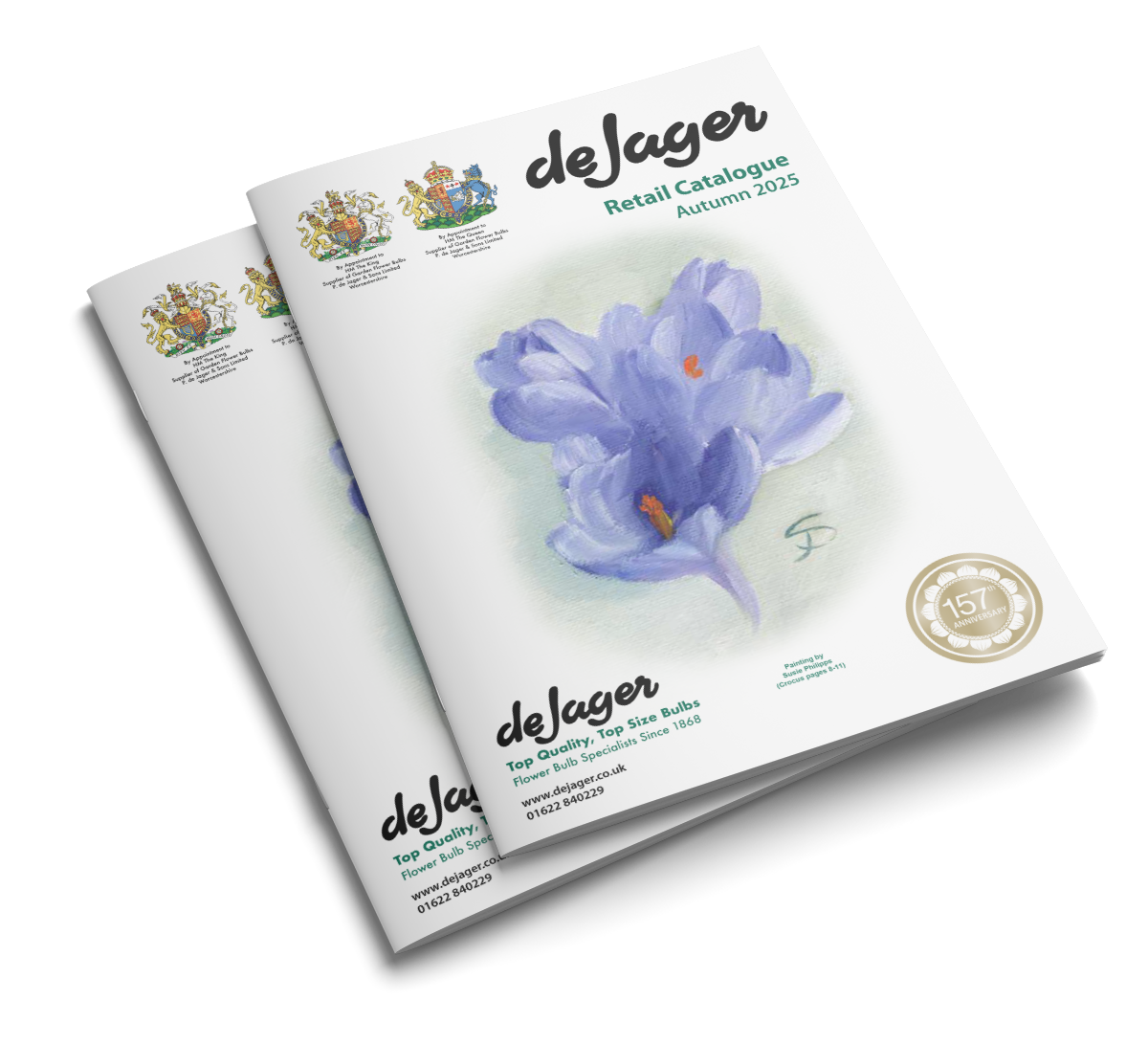Iris Species & Hybrids
The lovely dwarf iris provides a welcome splash of colour in the garden. Best in sunny, well drained position.
Click on the product name for more details
-
Bucharica
M5591
Exquisite Iris ‘Bucharica’ bears silky feathered blooms, consisting of upright ivory standards and golden-yellow falls, sometimes streaked in grey.
Part of the Juno group, this spectacular Iris produces vigorous plants and flowers which are larger and later than most dwarf iris species, blooming in April on stems up to 35cm tall. The deep green lanceolate leaves are also broader than Iris reticulata and are produced up the stems.
Plant the bulbs in a position in full sun, into well-drained, moisture-retentive soil. Perfect for pots, rockeries, alpine gardens and sunny borders - plant in groups for impact.
-
Danfordiae
M5592
Part of the reticulata group of irises, Iris ‘Danfordiae’ is loved for its sunny disposition, bearing wide petals of bright yellow with small brown speckles.
The vivid flowers bloom during February, adding a splash of colour to spring pots, rockeries and alpine beds. The blooms produce a sweet scent which travels in the air on warmer days.
At a full height of just 10cm, Iris Danfordiae should be grown near the front of a border, in a spot where the cheery flowers will be seen and appreciated.
Plant the bulbs in autumn, in full sun and in any soil which is moist and well-drained.
-
Ret. Hoogiana
M5689
Sword-like leaves rise boldly, followed by sky-blue flowers with delicate scent. A true rhizomatous iris Hoogiana, best grown in open sun with dry winter and moist spring conditions.
Flowers appear in May, each bloom wide and vibrant. A bold presence in gravel beds or alpine schemes.
-
J.S. Dijt (dijt)
M5605
Petite Iris ‘J.S. Dijt’ is perfect for adding a classy touch of rich, velvety colour to the garden in early spring.
Grassy foliage appears in winter, from which the bewitching blooms appear in February and March. Petals of deep, opulent purple are splashed with a white blotch on their falls and a striking golden streak.
Fill pots and window boxes with the bulbs in autumn and top with moss or gravel for a treat in spring when the flowers unfurl. Can be planted as part of a mixed display or bulb lasagne, forming the uppermost layer of bulbs, usually first to emerge.
Also excellent for rock and alpine gardens – plant in groups for an impactful, stylish show of colour.
-
Magnifica
M5690
Glossy green foliage gives rise to lilac blooms brushed with near-white falls and golden signal lines. Each flower of the iris Magnifica is 8cm wide, arising two to six per plant. Prefers sun and well-drained soil.
Strong naturaliser, flowering late spring with soft, poised beauty.
-
Magnifica Alba
M5681
Crisp white flowers with golden midlines rise cleanly from glossy leaves. A cooler variant of the lilac form, iris Magnifica Alba blooms through late April into May.
Offers serene contrast among stronger tones. Ideal for sunny spots with freely draining soil and minimal disturbance.
-
Ret. Alida
M5606
Magical Iris reticulata are some of the first bulbs to flower in late winter and pale blue ‘Alida’ is an excellent variety for adding a welcome splash of colour to the garden.
Silky, sky-blue petals unfurl in February and March, featuring white and deeper blue flecks on their falls, with a contrasting, sunny streak of yellow.
Perfect for container displays, the bulbs can be layered with other spring blooming flowers for a long-lasting display and are ideal for rock gardens, where the large feathery flowers can be viewed up close and fully appreciated.
-
Ret. Blue Planet
M5627
Pretty feathered blooms of baby blue unfurl during February and March on exquisite Iris ‘Blue Planet.’
Ideal for a soft pop of colour in pots, window-boxes and rock gardens so early in the year - the bulbs often push their way up through a bed of snow. Plant these garden gems where you can view their exquisite markings at close range – the lower petals feature darker veining and freckles, a touch of white and a lick of bold yellow.
Iris reticulata Blue Planet can be grown as part of a colourful spring display with other bulbs in the ground or in containers, in any well-drained neutral soil.
-
Ret. Clairette
M5440
A charming dwarf Iris which looks like hand-painted Delftware, with neat brushstrokes of deep cobalt, soft lilac-blue and white.
These distinctive spring plants are perfect for filling containers with early colour and are great for rockeries and alpine gardens, thriving in any neutral soil which is well-drained.
The pretty patterned flowers bloom during February and March and look most striking in groups. Plant the bulbs where you will appreciate their fleeting beauty up close and ensure they are not overshadowed or smothered by larger plants. If planting in pots, use the containers to adorn a doorway, or raise them onto a garden table for enjoyment.
-
Ret. Harmony
M5604
The early flowers of Iris reticulata ‘Harmony’ bring a rush of rich colour, just when the garden requires it in February.
The royal-blue blooms feature feathery standards and falls decorated with a yellow and white blotch.
Small but striking, this bold little Iris can be planted to naturalise in grass and will do well in a rockery or alpine border. The bulbs are also excellent grown in pots - place where the exquisite beauty and fragrance can be enjoyed.
Well-drained soil which remains moist in spring and a spot in full sun or dappled shade is essential for reticulata Iris to thrive.
-
Ret. Louise
M5687
Creamy-white petals streaked with rich golden markings unfold early in the year. Each bloom of the iris Louise sits low but sings loudly in small groups. Best in rockeries, troughs, or gravel beds where close-up beauty is appreciated. Full sun and dry summer conditions keep bulbs perennial.
-
Ret. Pixie
M5601
A pretty and petite Iris, ‘Pixie’ belongs to the reticulata family and stands just 15cm tall making it an excellent choice for spring containers.
The superb flowers bloom in an eye-catching shade of violet-blue, featuring a white patch and bright yellow mid-rib on their falls.
Closely related to popular ‘Harmony,’ this exquisite variety has been recognised by the RHS with an Award of Garden Merit for plant excellence and reliable qualities.
The bulbs should be planted in autumn, in a spot which receives plenty of sun and in moisture retentive, well-drained soil. Great for alpine and rock gardens.
-
Ret. Polar Ice
M5688
White standards of the iris Polar Ice tower above ice-blue falls—early bloomers braving February winds. Best in sun-soaked rockeries or alpine troughs.
Requires gritty, well-drained soil and dry summers.
Each flower offers a quiet spectacle, appearing when colour is still rare in the garden.
-
Purple Hill
M5622
The Iris Purple Hill enchants with lush purple petals, each adorned with striking yellow and white blotches on the falls. This regal flower exudes sophistication and grace, rich colours creating a dramatic focal point in any garden.
As it blooms, it infuses the landscape with a sense of luxury and splendour, inviting admiration and adoration. The unique interplay of colours on its petals enhances its allure, making it a true garden jewel.
-
Warlsind
M5682
Complex hues swirl together: snow-white base, violet margins, yellow throat, golden-brown hints. Iris Warlsind delights late spring gardens with shifting colours and graceful form.
Stands tall in mixed beds or gravel gardens. Reliable and striking, especially when planted en masse.
-
Harmony & Alida Mix
M5630
A harmonious pairing of two exquisite blue dwarf Iris. Blooming in tandem during February and March, this mixture includes the bulbs of soft blue Iris ‘Alida’ and royal blue ‘Harmony.’
With both varieties reaching a dainty 15cm in height, this pretty mix is ideal for planting near the front of a mixed border, in rockery gardens and spring container displays.
Plant the teardrop bulbs in moisture-retentive soil in full sun. Ensure the ground or your potting mix is able to drain well, especially during the winter months as waterlogging can lead to rotting.
Planting in groups and swathes creates a natural and impactful display.
-
Reticulata Special Mixture
M5603
A superb mix of Iris reticulata varieties, with colours ranging from the softest blue through to the richest deep purples. All feature distinctive and attractive markings on their falls such as a sweep of vibrant yellow, blue flecks and finely painted veining.
The bulbs should be planted in autumn, into any well-drained soil in full sun. Ideal for colourful container displays, the flowers bloom during February and March at a height of 15cm.
Place pots where you can view the delicate flowers and their exquisite markings and colours up close – a garden tabletop, window box or near a doorway you pass through often are perfect spots.


